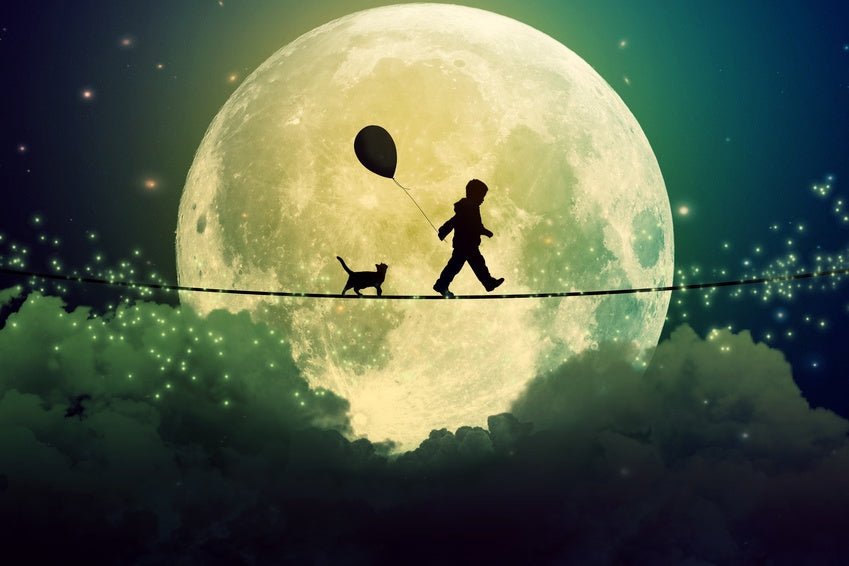
Have you ever kicked your spouse while sleeping at night? Or do you suffer from extremely vivid nightmares? Perhaps you’ve discovered you’ve been sleepwalking, sleep talking or maybe even making a tasty cheese sandwich in the kitchen while asleep? They may be odd questions, but if you have a parasomnia, they might ring a bell.
Parasomnias are sleep disorders that, although interesting to discuss, are often undesirable, occasionally embarrassing and less than wonderful for the individual concerned. The term ‘parasomnia’ covers a range of unusual physical, emotional and behavioural activities that can occur while someone is asleep. They can range from sleep walking, sleep talking, night terrors and nightmares to more common conditions such as restless leg syndrome. These parasomnias can be quite problematic and disrupt the sleep of both the sufferer and their bed partner.
Some parasomnias occur during REM sleep, while others occur during non-REM sleep. They are classified as either:
- primary (happening in their own right), or
- secondary (due to another medical condition).
Mostly, parasomnias are disorders of arousal, partial arousal or sleep stage transition. They are usually dissociated sleep states that will become partially aroused during the transition between either NREM or REM. To understand more about this, let’s look a little more closely at these two types.
Non-rapid eye movement (NREM) parasomnias
NREM parasomnias include night terrors, confusional arousal, sleepwalking, sleep eating, teeth grinding, rhythmic movement disorder, sleep sex, and restless leg syndrome.
NREM parasomnia occurs during NREM sleep (a.k.a. slow wave sleep) in either phase 1, 2, 3 or 4, when the individual is in a deep sleep state. Researchers say there is a physiological activation where the brain exits from this slow wave sleep and somehow gets stuck in between sleeping and wakefulness.
Like sleepwalking, many parasomnias, particularly night terrors and sleepwalking, happen in childhood and are outgrown. However, parasomnias can be seen in adults.
Some people find that certain activities or medications can trigger their parasomnias. Sleep deprivation, emotional stress, depression, fever or illness, excessive physical activity or medications can also trigger an event. To minimise occurrences, it’s therefore recommended to maintain sound health, practice good sleep hygiene and make sure you’re giving yourself the best chance for a good night’s sleep by sleeping on the appropriate mattress and pillow for your body type and sleeping position.
REM parasomnias (Aka NREM behaviour disorder)
NREM parasomnias include acting out dreams and doing potentially regrettable things, such as striking a partner; yelling; swearing, moaning and groaning loudly; or moving around and hurting themselves.
In REM sleep, our brains are active, while our bodies are completely paralysed. Some experts theorise that this is so we don’t react impulsively to what’s happening in our dreams. It’s like a protective mechanism. And this is where things gets interesting because with REM parasomnias, the usual muscle atonia (loss of strength) that kicks in to immobilise us is not present. In other words, our muscles can move around as if we were awake – which is how things get dangerous. When NREB behaviour disorder manifests, we are asleep, yet mobile and perilously out of control of our actions.
Men suffer more REM parasomnias than women, with episodes usually starting around the ages of 50 to 65 years. These parasomnias can be primary, but secondary parasomnias are related to medications (in particular, anti-depressants). Parkinson’s disease, dementia and multiple system atrophy (MSA) have also been linked to RBD, and sadly, an NBD can be a warning signal that you may develop one of these diseases.
Examples of secondary parasomnias
As mentioned, secondary parasomnias are those where some other medical condition relating to another organ in the body is connected to the disorder. There are many examples:
- muscle spasms & cramps
- night sweats
- post-traumatic stress disorder
- asthma and respiratory problems
- seizures or fits
- nocturnal panic attacks or depressive or psychotic episodes
- headaches, cluster headaches or migraines
How to protect a parasomnia sufferer
Safety is key here. Make sure the sufferer does sleep on the top bed bunk or in a room where there’s a balcony or window. Make sure any sharp or harmful objects are out of harm’s way. Some people use a door alarm so that they can be woken if they try to leave their room.
Friends and family should not make fun of the parasomnia sufferer; remember - they are not in control of their activities, some of which may feel quite shocking or disturbing to acknowledge.
If someone having an episode has strayed from their bed, try talking to them softly while grabbing their arm, but don’t yell or be aggressive. This will only frighten the parasomnia sufferer and could trigger a violent response.
Do parasomnia sufferers require therapy?
For parasomnia sufferers, it may be a relief to know that their condition is not at all linked to any psychiatric disorders. However, chronic sufferers may feel emotionally strained as their actions may be embarrassing, overwhelming or shameful. If this is the case, visiting a therapist may be a good way of coming to terms with the condition, along with planning lifestyle strategies to minimise harm and distress for the individual and those around them.
Mattress & Pillow Science - the healthy sleep specialists.




Leave a comment
This site is protected by hCaptcha and the hCaptcha Privacy Policy and Terms of Service apply.